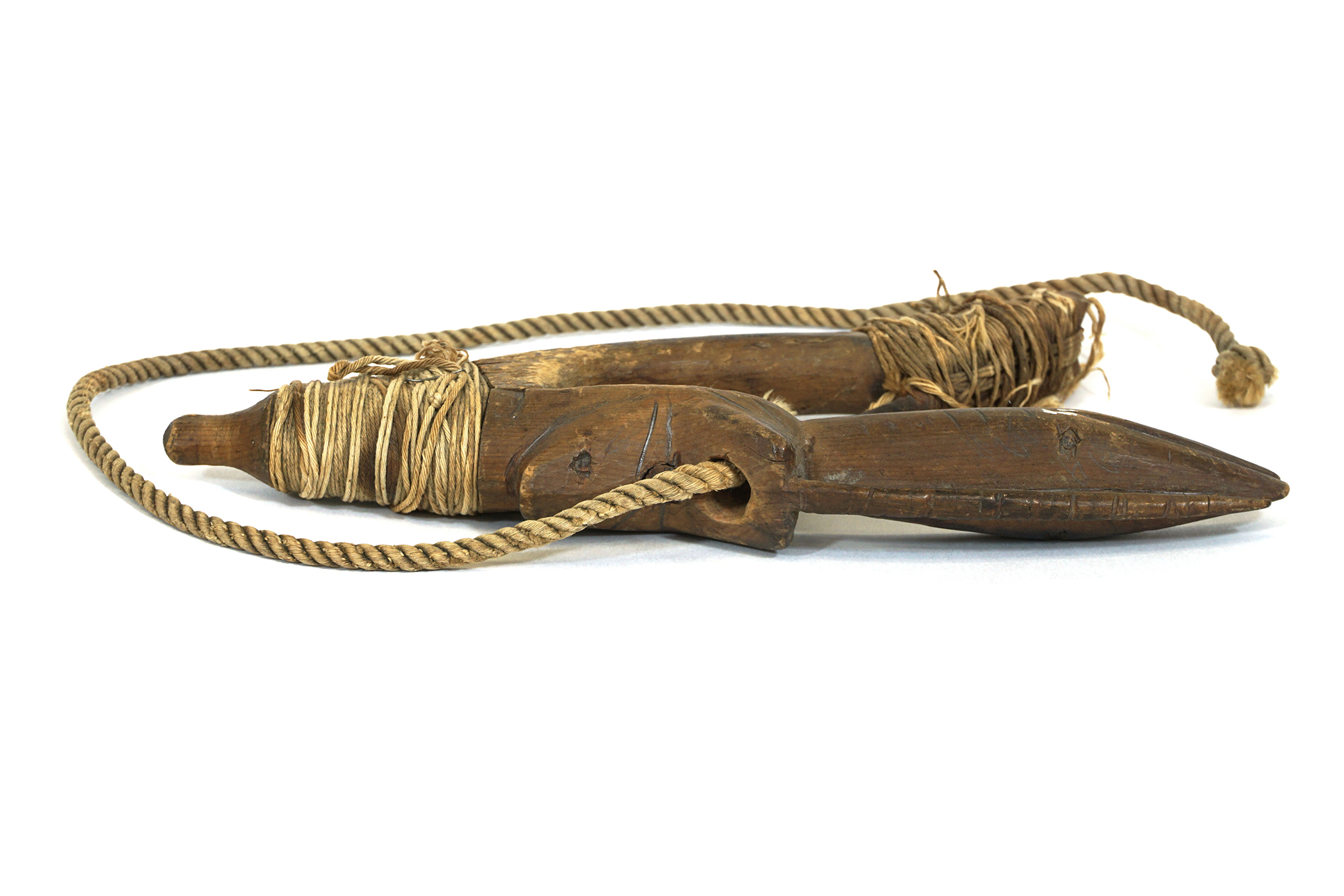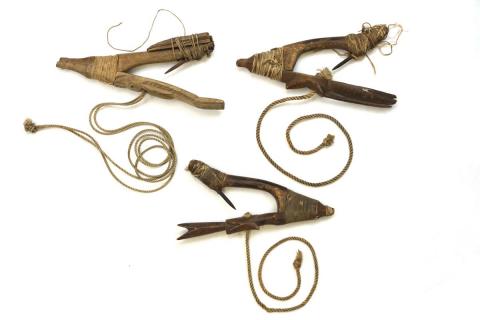
Indigenous peoples of the Northwest Coast (NWC) including the Tlingit, Haida, and Tsimshian Alaskans have used carved halibut hooks for hundreds of years. These handmade pieces of art, more commonly known as wood hooks, function to spiritually attract and physically catch the large bottom dwelling halibut which can weigh more than 500 pounds.
TRADITION
Halibut hooks are covered in intricate effigy and animal carvings to provide a spiritual lure to the halibut and form a connection to the otherworldly for fishermen. Figures known as shaman are pictured frequently for their spiritual power as well as for their ability to control weather, heal the sick, and traverse the worlds of the spirit and profane. Just like the shaman, many of the animals pictured in carvings can also traverse multiple worlds (including land sea and air). A variety of animals are pictured in these complex carvings, such as octopus, ravens, halibut, and narwhal (see image 1966-0180). It is vital that these carved images are always placed at the downward facing side of the hook. This is so the halibut can view the carving, as its shape and expression of respect helps lure them to bite the hook. The spiritual connection is important to fisherman -halibut fishing is a dangerous act of travelling to deeper waters (the otherworldly place) in search of the powerful halibut. In addition to carving intricate designs into the hook, a practice known as “talking down the line,” is performed by the fisherman, who speaks directly to the hook as it is lowered into the water, telling it to “not let go once the fish is caught” or “go down to halibut land and fight.” Over time, halibut hooks have become longer to favor decorative elements and more carvings as opposed to functional requirements.
CONSTRUCTION
To create a halibut hook, a NWC fisherman takes two pieces of wood and forms them into arms, lashing them together into a V shape. The V shape of the halibut hook is unique for its ability to only catch medium sized halibut, preserving the population in the process. Many skilled NWC carvers use their hands to measure dimensions of the wood hook (one fist fits between the tip of the barb and the arm, etc.). Yellow cedar is buoyant, and a common choice for the upper arm which floats above the lower arm made of denser pacific yew or alder. This allows the upper arm to stay level and the lower arm to face towards the bottom while fishing. A barb is secured to the upper arm using twine, where historically cordage materials made from braided bull kelp or cedar and spruce barks would be applied. Originally, slivers of black or brown bear femur were used to form the sharp barb. More recently the creation has been replaced with an iron nail (see example). Iron barbs are generally preferred because of their durability under the strain of the large halibut, but the extra weight needs to be compensated for with the addition of extra wood for proper flotation.
LEGACY
Art hooks are the construction of larger more decorative wooden halibut hooks specifically for display, commonly sold as souvenirs or given as gifts. Today, traditional metal hooks have almost completely replaced historic wood hooks in NWC halibut fishing, but the historic and tribal value of art hooks continues this spiritual and physical tradition.
Exhibit by Noah Robinson, 2021 CPS Intern
REFERENCES:
Alaska State Committee for Research. Traditional Halibut Hook. Accessed 24 Sept. 2021.
Delisle, Raina. "The Traditional Wooden Halibut Hook That's Still Snagging Fish Off Alaska." Smithsonian Magazine, Smithsonian, 2021, www.smithsonianmag.com/science-nature/revival-traditional-indigenous-wooden-halibut-hook-alaska-180970623/. Accessed 24 Sept. 2021.
Malidine, Jonathan. "Northwest Coast Halibut Hooks: an Evolving Tradition of Form, Function, and Fishing." Human Ecology. Research Gate, www.researchgate.net/publication/313089299_Northwest_Coast_Halibut_Hooks_an_Evolving_Tradition_of_Form_Function_and_Fishing#read. Accessed 14 Sept. 2021.
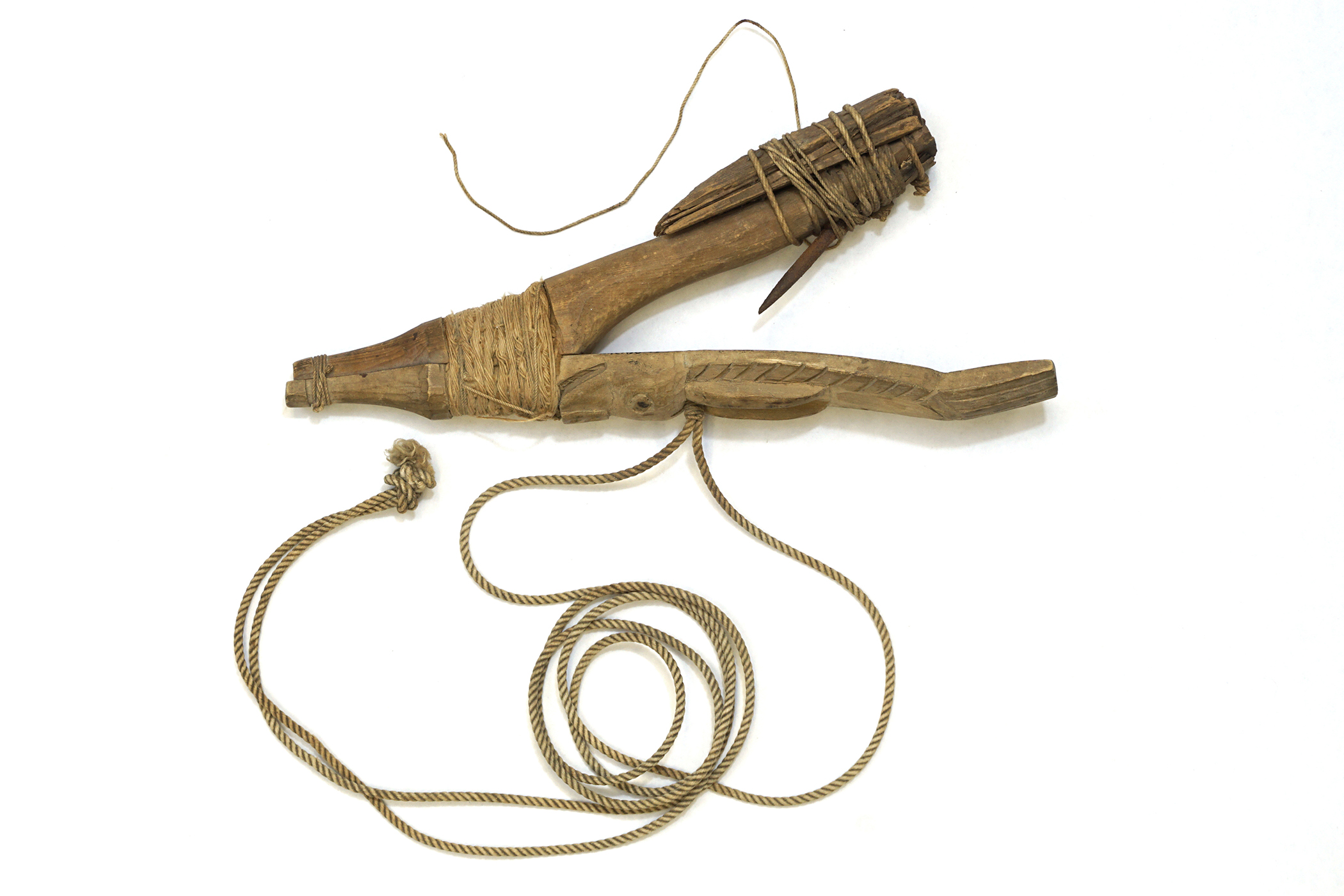
1966-0094
Halibut Hook
wood, stone, iron, cord
Alaska, Northwest Coast, North America
1905
Carved effigy head (deer?) on bird body. 2-piece construction bound with cord.
Additional pieces of wood are lashed along with the barb for buoyancy to compensate for a transition to the use of heavier iron nails. This halibut hook is the oldest in the exhibit dating back to 1905.
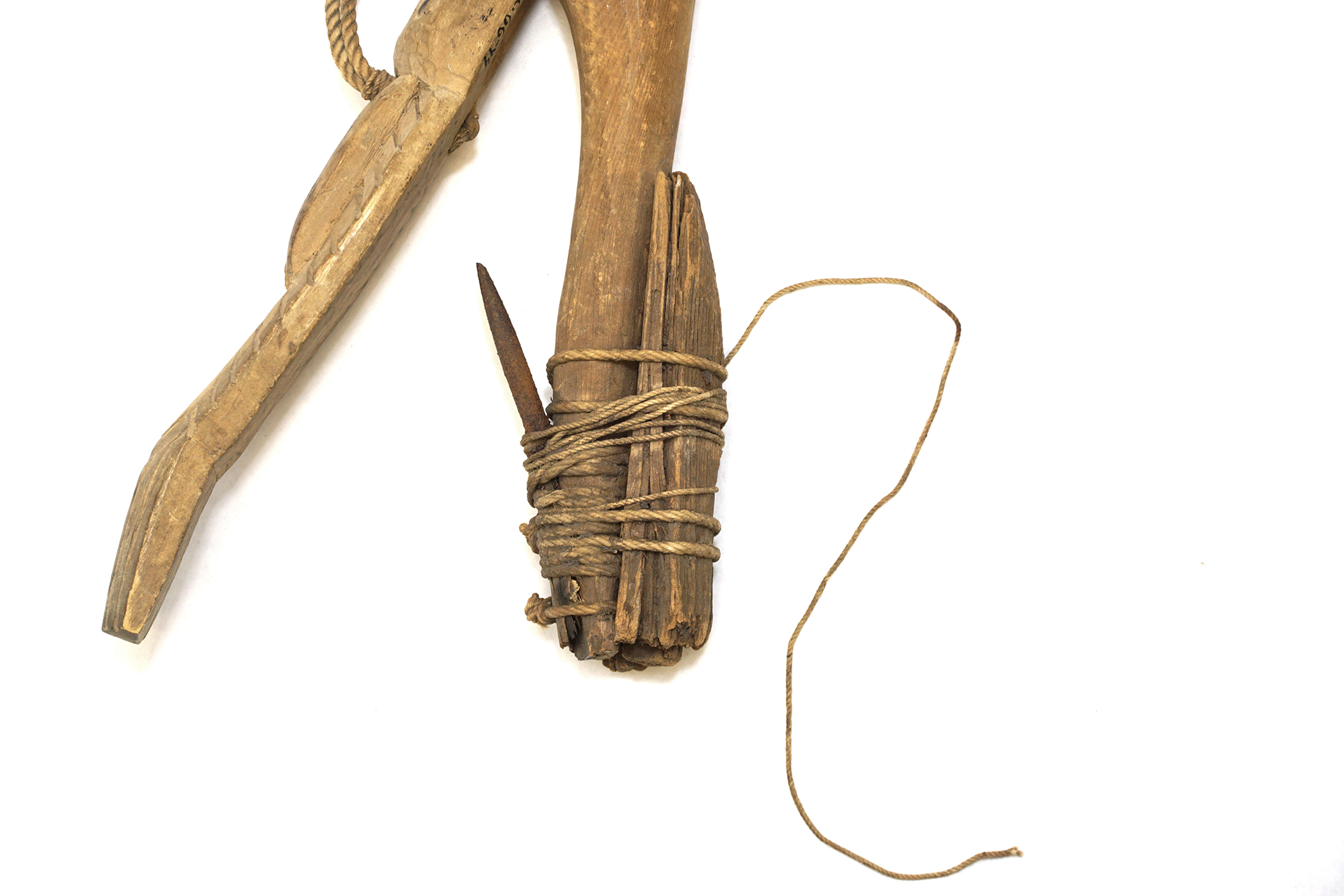

1966-0180
Halibut Hook
wood, metal
Alaska, Northwest Coast, North America
Early 20th Century
Narwhal on top with whale head underneath in side view.
Whales and Narwhals are a symbol of good fortune, prosperity, and spiritual awareness in many cultures of the Northwest coast.
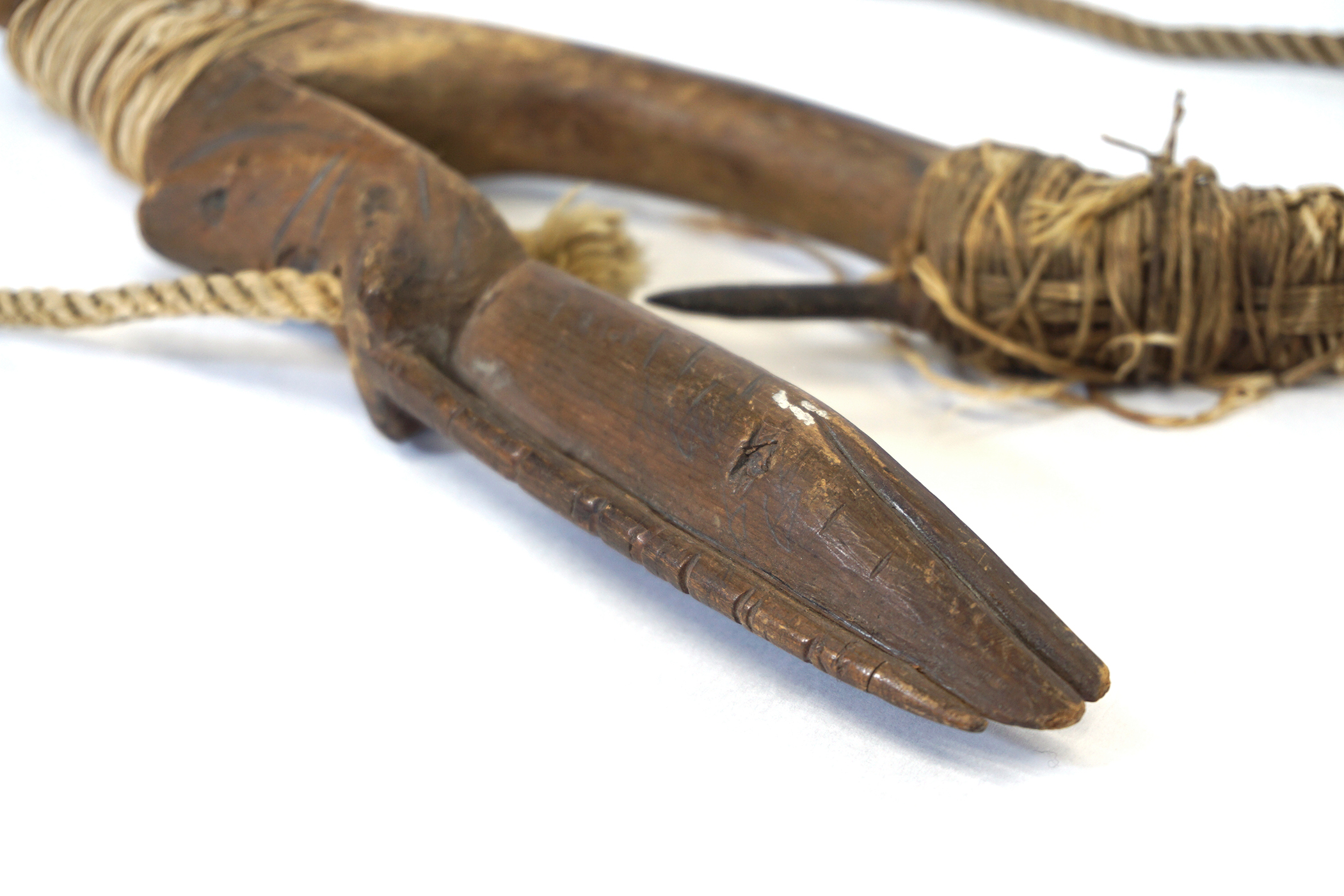
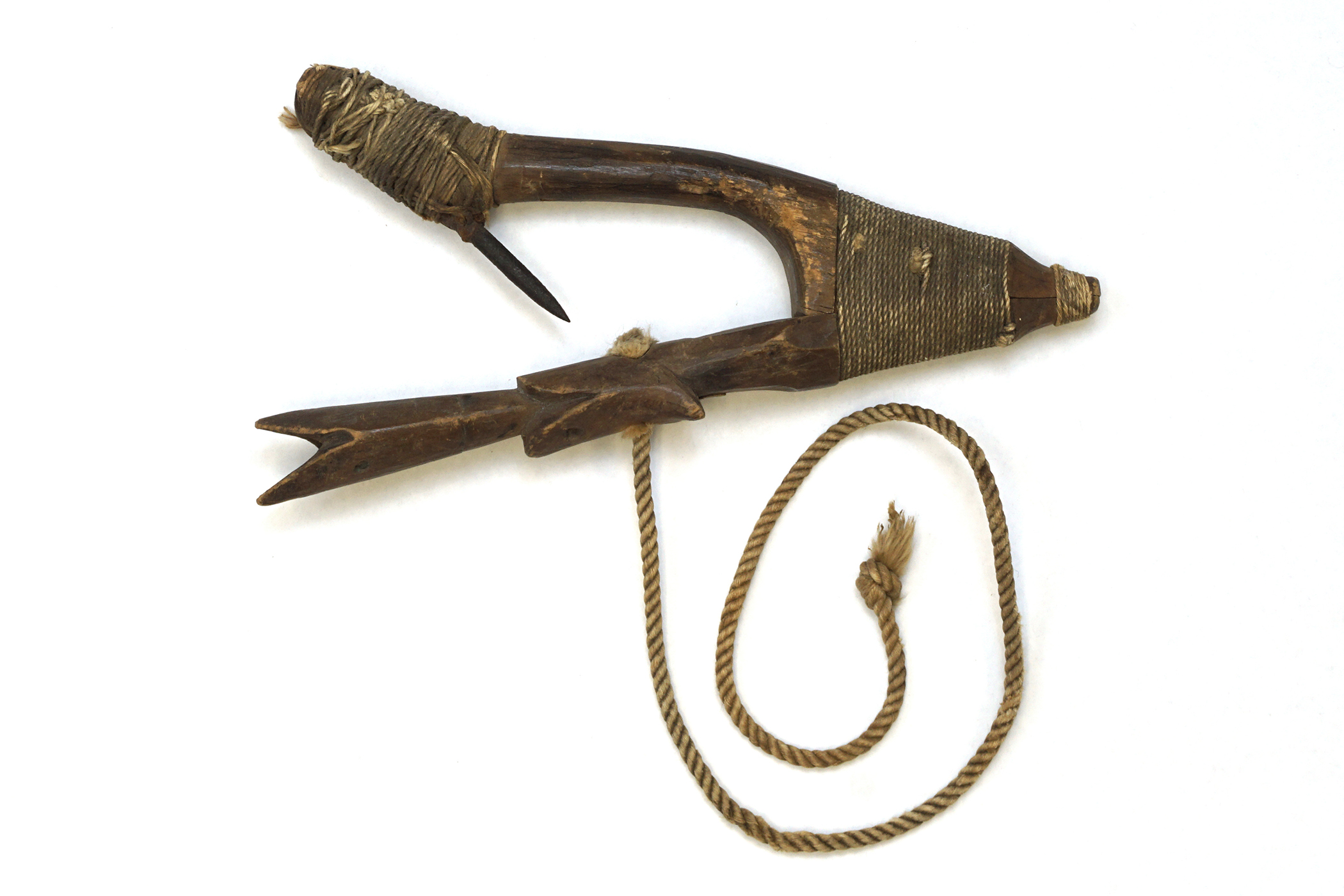
1966-0440
Halibut Hook
wood, cord, ironwood, metal
Alaska, Northwest Coast North America
Early 20th Century
Constructed of several pieces wrapped with cord. Effigy carving.
Classic two-piece construction with evidence of use, duo of effigy carvings at the base.
